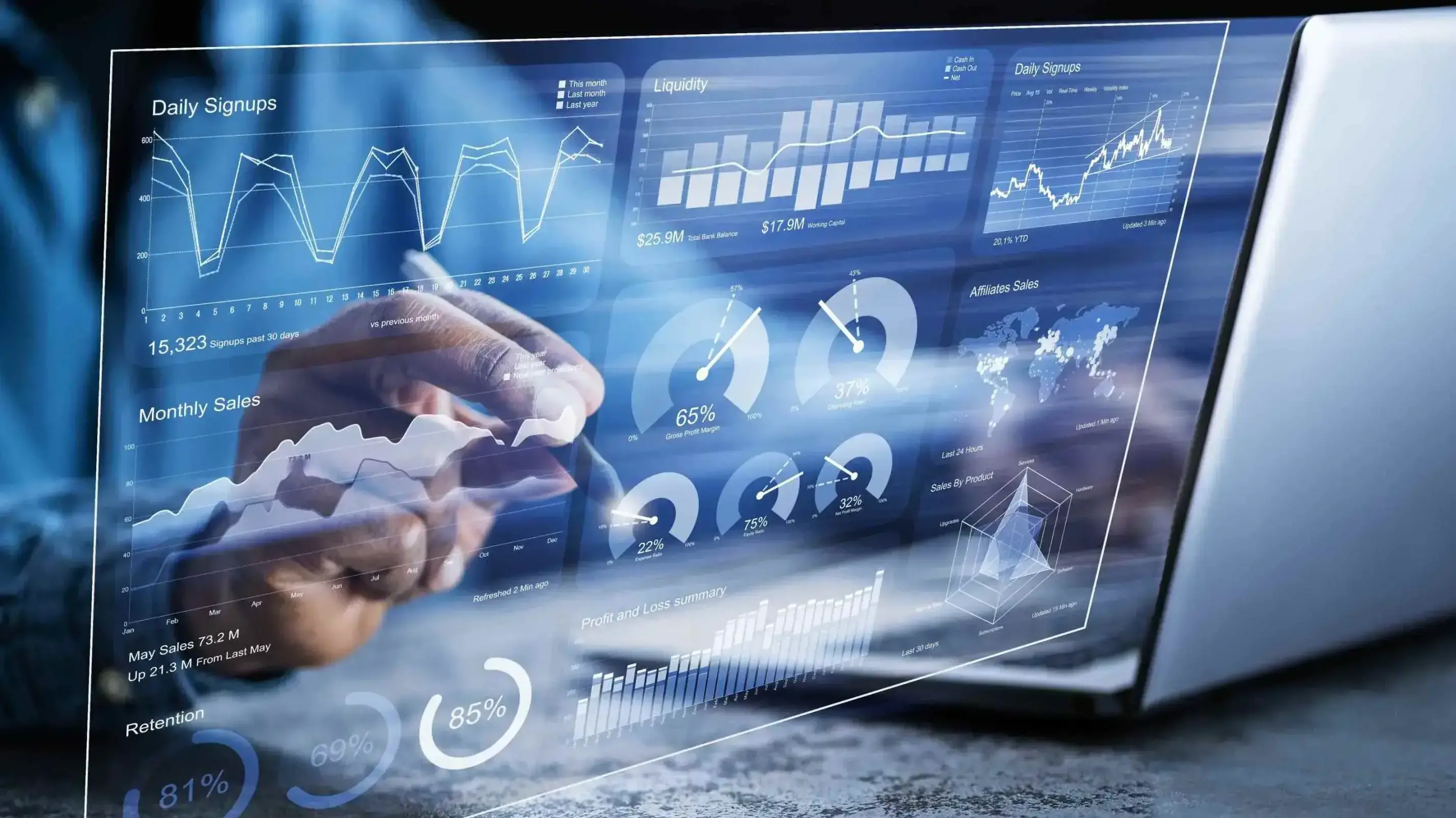Every business, small, medium, and large must have a growth trajectory. Growth is a signal of progress and depending on the business model the pathway to achieving growth varies, and this is why a good business model is crucial for any business's financial stability, competitive edge, and profitability.
There is no one way to grow a business, and there are usually several factors at play, one of which is market dominance. And to achieve this there must be strategies that inform decisions making.
Today, modern businesses employ the use of modern tools for strategies. These tools give insights into how to expand, progress, and mitigate risk using data analytics.
In this article, we’ll discuss a type of data analytics called predictive analytics. Before we begin let’s understand data analytics and what is involved.
Data Analytics Explained
The process of collecting and analyzing data to generate meaningful insights, which can be used to make business decisions is known as Data analytics. A data analyst gathers raw data, organizes the data, and interprets the data to answer or solve problems.
There are several branches of data analytics and they are;
Descriptive Analytics: ‘Asks the question, what is happening?’ This branch of analytics uses current and historical data to find trends and relationships. This is also called, “the simplest form of data analytics” because it does not explore deep into data. This technique can be carried out using simple visualization tools like Google charts.
Diagnostic Analytics: ‘Asks the question, why is it happening?’ It is used to determine why an incident occurred, and what factors influenced it. The basic process involves data discovery, hypothesis testing, drill down (focusing on specific aspects of data), data mining, and correlation.
Predictive Analytics: ‘Asks the question, what will happen in the future?’ This is an advanced analytics used to determine future outcomes. There are various techniques involved in performing predictive analysis and they include; Regression, Classification, Clustering, time series, Neural network, and Deep Learning.
Prescriptive Analytics: ‘Asks the question what might happen next?’ This is a statistical method used to determine a business trajectory - giving insights on how to make better decisions for growth.
Now that we’ve briefly gone through the different types of data analytics, let’s deep dive into the purpose of this article which is understanding predictive analytics.
What is Predictive Analytics?

Predictive analytics is an interactive process that uses different techniques to extract values from data to determine the future outcome of a business. This process involves the use of business historical data, data mining, statistical algorithms, and machine learning to identify risks and opportunities to make informed business decisions.
Key Points:
- Predictive analytics relies on;
- Data Mining
- Data Science
- Machine Learning
Let’s get into how a simple predictive analytics process can be achieved:
Problem Definition: The first stage is to define the objective of the business, this may involve listing the questions you want the predictive analytics to answer. For example, what do you want to do with the data you want analyzed?
Gathering Data: This process involves gathering relevant data. Businesses have historical data, a continuous tap of data that can be drawn from whenever the need arises. For example, customer feedback from interactions with the support team.
Data Preparation (Pre-Process): This process involves organizing data - cleaning raw data to remove duplicates, outliers, and missing data before processing. This pre-process requires the analyst to have an understanding of data and business problems and the ability to make data suitable for analysis.
Choose and Develop Predictive Model: This process involves choosing the appropriate predictive model based on business goals. The data analyst or scientist uses tools to develop predictive models based on the business’s problem, and the type of data set.
Machine learning algorithms, regression models, decision trees, and neural networks are commonly used to develop predictive models. The models are trained to identify relationships and patterns that would be used for making predictions.
- Data Validation and Deployment: At this stage, the data analyst checks if the model is accurate and makes necessary adjustments if otherwise.
Once the results are satisfactory it is deployed to make predictions. It may also involve presenting data using visualization techniques so that stakeholders can understand the processed data.
Advantages and Disadvantages of Predictive Analytics
Advantages
Limitations
Advantages of Predictive Analytics
Risk Mitigation:
Predictive analytics can help identify risk or potential risk by identifying historical and real-time data. Predictive models can improve accuracy and efficiency when it comes to identifying risk - because they can examine large data sets to identify patterns and trends compared to using more manual methods e.g. Surveys.
Informed or Strategic Decision-Making:
Businesses can make more strategic decisions rather than guessing or relying on basic instincts. Understanding the likely outcome of different decisions would allow businesses to create strategies that can increase profitability, efficiency, and satisfaction amongst other advantages.
Future Outcome:
Predictive analytics allows users to take a look into the future with a high level of certainty by analyzing historical and real-time data - identifying patterns and applying advanced algorithms to deliver accurate predictions and forecasts which can be used to improve strategies, mitigate risk, and spot opportunities.
Save and Improve Cost:
Predictive analytics can be used to improve how a business manages its resources using accurate forecasting, by anticipating faults before they occur thereby reducing maintenance costs, as well,
Customer Satisfaction:
Predictive analytics helps businesses understand customer's behavior, preference, and needs. For example, customers can be categorized according to their purchasing patterns and offered personalized experiences, coupons, products, etc
Limitations of Predictive Analytics
Poor Data Quality:
For predictive analytics to be successful, the data must be large, accurate and relevant otherwise the prediction would be flawed. This means that collecting high-quality data must be prioritized, as well as cleaning and sorting data for complete accuracy.
Data Privacy and Security Issues:
Performing predictive analytics requires access to users or company data which can be sensitive, yet, necessary to make accurate predictions.
This raises concerns about data privacy and security which means analytics must be performed in a way that ensures that user's information is safe from unauthorized entities.
Methods like encryption, access control, and compliance are put in place to protect data and mitigate security risks.
Predictive Analytics Models
There are various types of predictive analytics models, and these models are used for understanding data relationships in data sets.
Classification Model: This model is a supervised learning technique where the model learns from pre-defined or labeled data, to categorize new data or input into various classes. Examples of classification models include; logistic regression, decision trees, random forest, etc. These models can be used in numerous applications like fraud detection. For example, banks can use this model to check if a transaction is fraudulent by classifying transactions into legitimate or illegitimate categories based on patterns.
Clustering Model: This model sorts data and groups them into categories based on their characteristics. For example, a company can group customers based on similar purchase patterns, this can help them create different experiences for each customer group. Examples of clustering models include; k-means clustering and hierarchical clustering.
Regression Model: This model is used to predict continuous outcome variables based on one or more independent variables. An example is predicting the interest rate of a loan. The regression model can find patterns between the variables to make future predictions about the interest rate.
Time Series Forecasting: The model is used to predict future values based on patterns, and historical data that is time-based. It uses data input based on periodicity e.g. day, week, month. An example is predicting sales based on seasons.
Predictive Analytics Tools
There are so many predictive analytics tools, here’s a list of some common ones;
- SAS advanced analytics
- H2o
- Tableau
- IBM SPSS(Statistical package for social sciences)
- RapidMiner Studio
- TIBCO Spotfire
Industry Use Cases
Predictive analytics can be used across various industries, let’s explore some of the industries that use it and how it is being used;
Commercial Banks
Predictive analytics can be used to -
- Assess market and trade risks.
- Assess credit risk for loan applications
- Detect fraudulent transactions.
Retail
Predictive analytics can be used to -
- Manage customer reward programs
- Boost cross-selling and up-selling by targeting customers based on their purchases or profiles.
- Enable accurate customer demand forecasting
- Detect customer churn
Transportation
Predictive analytics can be used to -
- Develop route planning
- Predict vehicle maintenance
- Enhance supply-chain operations.
Summary
Businesses are using predictive analysis to create master plans. They’ve come to understand the value of data, and how it can be used to make informed decisions. However, data is useless if it can’t be analyzed, interpreted, or translated properly.
With the right analyst, historical data and all other data sources can be interpreted to make better and more informed decisions. For, example a data analyst can use predictive analytics, to determine which customers give the most value, or how to influence the buying decisions of customers.
Predictive analytics requires extensive planning which may be a lengthy process, however, its result can positively influence the future of a business.
Frequently Asked Questions
How can Google Analytics help me enhance my landing page's effectiveness?
Google Analytics provides insights into visitor behavior, allowing you to track metrics like traffic sources, bounce rates, and conversion rates. This helps you optimize your landing page for better performance.
Why is a well-defined strategy important in e-commerce website localization?
A well-defined strategy is crucial as it ensures consistent implementation across languages and markets. Developing a comprehensive localization strategy aligned with business goals, considering cultural, technical, and linguistic aspects, is key to a successful and effective global presence.
How can businesses adapt their B2B marketing strategies to changing consumer behaviours?
Adapting B2B marketing strategies to changing consumer behaviours requires businesses to stay attuned to shifts in preferences and expectations. Conducting regular market research, collecting customer feedback, and analysing data on user behaviour help businesses identify evolving trends.

Jessica Agorye is a developer based in Lagos, Nigeria. A witty creative with a love for life, she is dedicated to sharing insights and inspiring others through her writing. With over 5 years of writing experience, she believes that content is king.
View all posts by Jessica Agorye





















